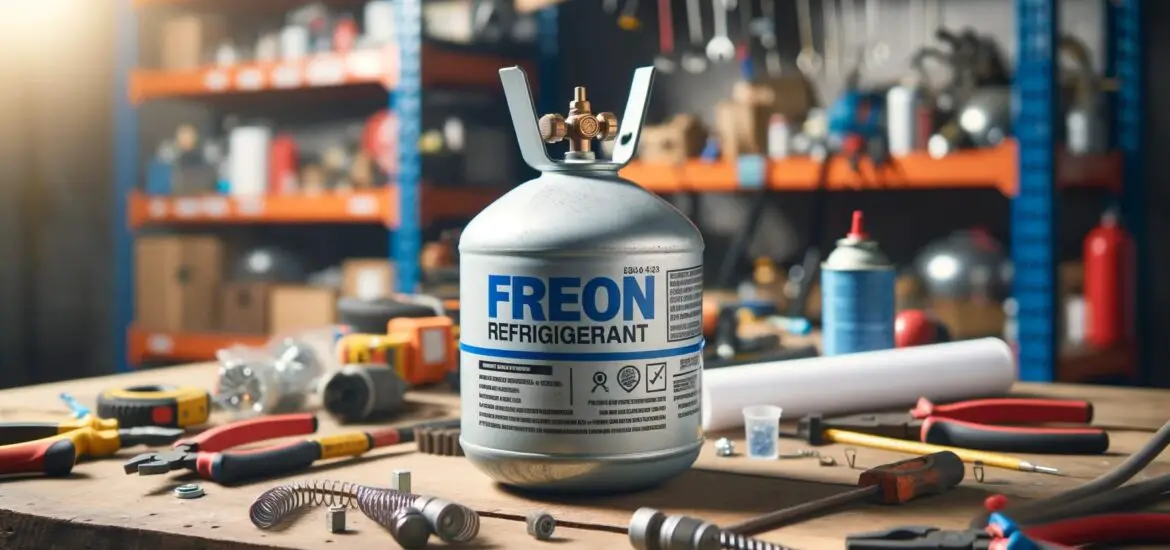If you’re seeking to understand freon evaporation, you’ve come to the right place. This article will guide you through a step-by-step breakdown of what freon evaporation is, its importance, how it works, and what safety precautions you need to consider.

Table of Contents
What is Freon Evaporation?
Freon is not a single substance but rather a brand name that has come to be used generically for a variety of refrigerants. These refrigerants are chemicals that have the property of easily transitioning from a liquid to a gas and vice versa.
In the context of air conditioning and refrigeration, freon evaporation refers to the phase where this refrigerant changes from a liquid state to a gaseous state. This transformation takes place within a specific part of your cooling system known as the evaporator coil. During this phase change, freon absorbs heat energy from the surrounding air, effectively cooling it down.
Why Freon Evaporation is Important
Freon evaporation serves as the backbone of the cooling process in air conditioners and refrigerators. The reason it’s so crucial lies in the physics of phase change. When freon evaporates, it undergoes a change in its state, from liquid to gas.
This process requires energy, specifically thermal energy or heat, which is absorbed from the environment. This heat absorption is what cools down the air around the evaporator coil.
The cooled air is then circulated back into the room, making the environment more comfortable. Without the evaporation process, the cooling effect we associate with air conditioners and refrigerators would not be possible.
The Basic Steps of Freon Evaporation
The process of freon evaporation doesn’t occur in isolation; it’s part of a cycle that involves several key steps. Each step prepares the freon for the next stage, and a failure or inefficiency in any step could compromise the cooling process.
Compression
The refrigeration cycle starts with the compressor, usually a large unit situated outside the building. In the compressor, freon gas is pressurized.
This pressurization increases the temperature and energy level of the freon, turning it into a high-pressure, high-temperature gas. It’s important to note that the compressor must be in good working condition for the cycle to start effectively.
Condensation
After compression, the high-pressure, high-temperature freon gas moves to the condenser coil. The condenser is often a series of coils located outside the building and is equipped with a fan.
The fan helps disperse the heat from the freon to the outside air. As the freon loses heat, it transforms from a gas into a liquid while remaining at high pressure. The change from a gas to a liquid releases a lot of energy, which is expelled as heat into the atmosphere.
Expansion
The next phase is the expansion valve or capillary tube, which acts as a bridge between the high-pressure side of the system and the low-pressure side. The liquid freon passes through this valve or tube, where its pressure is significantly reduced.
This reduction in pressure also causes a reduction in temperature, making the freon ready for the evaporation process.
Evaporation
Finally, the low-pressure, low-temperature liquid freon enters the evaporator coil. This coil is located inside the building and is also equipped with a fan.
As indoor air passes over the coil, the freon absorbs the heat and begins to evaporate or change back into a gas. This phase change absorbs a large amount of heat, effectively cooling the indoor air. The gas then returns to the compressor, and the cycle begins anew.
It’s crucial to understand that all these steps are interconnected, and efficient freon evaporation is dependent on each of the preceding steps being performed effectively.
Safety Precautions
Freon and other refrigerants can be hazardous if handled improperly. Direct contact can cause skin burns, and inhaling the gas can lead to health issues.
Always use protective gear like gloves and goggles, and ensure you’re working in a well-ventilated space. It’s illegal to release freon into the atmosphere, so make sure to capture and recycle it according to local laws and regulations.
Professional Guidance
While understanding the basics of freon evaporation can be helpful, working with refrigerants typically requires specialized training and certification. If you’re not a certified professional, it’s strongly recommended to consult or hire one for tasks related to freon or any other refrigerant. Incorrect handling can result in system inefficiency, legal repercussions, and severe health risks.
